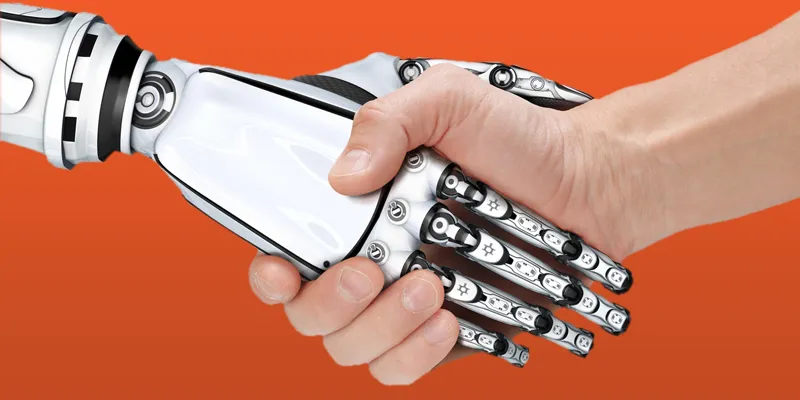How AI is about to disrupt the relationship economy
Back in the dawn of the industrial revolution, products were the basic units of economy. People decided which product to buy depending on the quality and utility of the product. Better products would gradually become popular, pushing out products that were not as good. The only way an entrepreneur could win over their customers was by building a product that was clearly better than the competition.
However, with the advent of software, products have become commoditised. Today, it’s incredibly easy to prototype a software product and then distribute it to masses. The same can be said about hardware products as well.

Image : shutterstock
In this age of commodity products, only companies that offer a stellar customer experience will survive. It won’t be an exaggeration to say that we are living in a 'Relationship Economy', where products are commodity and customer experience can make or break a company.
The growing pains of customer service
Customer service is still a big problem for companies and customers alike. Traditionally, customer service was provided over the telephone. We got to talk to a human being on the other side who’d patiently listen to our complaints and do their best to resolve them. The telephone provided an essential emotional connect to the customer. But providing support over telephone turned out to be both expensive and frustrating over time. The wait times on the phone increased, the lines kept being busy. Even if we managed to get hold of someone on the other side, we’d need to spend hours explaining and re-explaining our problem to the support agent. It was obvious that something like that was never going to scale.
Then came email and things were great again… for some time. It’s quick to send an email and explain the problem. We don’t need to stay on the phone for hours. Customer service representatives could also work on multiple emails at a time, driving down the costs. But while email provided ease, it took away the emotional connect. Long email queues and busy representatives also gave rise to painful wait times; it would now take days to receive a response.
The rise of the apps
We are living in a different world today. We don’t want to pick up the phone and call a support number, neither do we want to send an email to ask for help. This is the age of apps. We are spending a tremendous amount of time on apps these days, whether for productivity, creativity or just entertainment. As such, it’s clear that a customer service experience that sits inside the app and doesn’t require one to get out of the app and send an email or even make a call is the most natural and user-friendly. Looking at it from another angle, as an app developer you don’t ever want your user to leave the app because that might cause churn and hurt revenue. No wonder, the most popular apps in the world provide a stellar in-app customer service: they know what works best. In the app economy, the most delightful customer service will be delivered through real-time chat, and it’s not hard to see why.
But what about the efficiency of agents? How will they cope with the barrage of chat messages and how will they respond to all of them in real time? Indeed, mobile scale is much larger than web scale. It will not be easy for companies to provide quality customer service without assistance from software products that provide advanced workflow automation. But static automation can only help so much. At scale, we need to be intelligent.
Recent advances in AI
There has been some exciting development in the field of AI and machine learning in the past few years, and that has opened up a lot of new possibilities. Microsoft, Google, Amazon are all betting on AI in a big way. Google has recently open-sourced its deep learning framework called Tensorflow, which is bound to make cutting-edge AI algorithms accessible to all. But there is no free lunch; AI still needs a lot of data to learn its tricks. Practically speaking, AI algorithms are on the verge of being commoditised; it’s the data that’s going to matter more. Companies that already have a lot of user data are using it to drive better customer experiences via their AI. One can predict that large customer service platforms will only get better with more data and that might give them a formidable edge.
AI and customer service
The applications of AI in customer service are wide. AI can be used to drive quick answers to the most common problems that customers face. One can apply AI in gleaning knowledge out of unstructured customer/product information. Agent workflows can be automated and augmented using AI as well. A well-trained AI engine can group similar tickets together, flag the most urgent issues, surface trends in problems, detect/prevent customer churn, in a way lending superhuman abilities to a customer service agent. All of this ultimately results in superior customer service experience and happier customers.
Challenges and the road ahead
Despite all the potential, these are still early days for AI. The techniques are still developing, and we still probably need to collect higher quality data. It’s still not quite straightforward to perform “feature engineering” or even train our models. However, deep learning could hold a key to that question. A lot of AI as a Service products are cropping up, and Google’s DeepMind, Microsoft’s Cortana are getting smarter every day. IBM’s Watson even diagnosed a medical condition recently that has baffled the medical community. Singularity is not very far away.
The challenges seem hard, but we have already come so far. We need to pick the right tools, invest in technology and re-imagine AI-assisted customer service. The future is in front of us already, AI is clearly going to disrupt customer service, provided we place the right bets today.
(Disclaimer: The views and opinions expressed in this article are those of the author and do not necessarily reflect the views of YourStory.)







